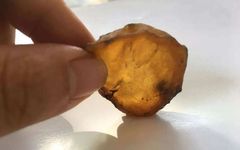【Properties】Spicy, bitter, hot; highly toxic
【Meridians】Heart, Liver, Kidney, Spleen meridians
(Take your time, enjoy the reading process)
The lateral root of Aconitum (also known as the child root) is the renowned “Fu Zi”. It has a powerful effect in stimulating true Qi, acting rapidly, and it is said that improper use can lead to toxicity. Nevertheless, throughout history, physicians have ranked it among the four major Chinese medicinal herbs (the other three being Ren Shen (Ginseng), Di Huang (Rehmannia), and Da Huang (Rhubarb)). Many practitioners use it flexibly, and numerous physicians have personally experimented with its dosage and application. With benevolence and skill, this potent medicine can work wonders in the hands of those who can appreciate its subtleties.
I remember asking my Chinese medicine teacher in college, “Does the Fu Zi grown in the south still have such a strong warming effect?” The teacher smiled and did not answer me. Looking back, I realize how naive my question was; how much knowledge would the teacher have to impart to explain such a complex issue to a novice?
—— Preface
The Aconitum genus is known for its highly toxic plants and is also one of the most widely distributed medicinal plant genera. There are 174 species of Aconitum worldwide, with about 36 species used in traditional medicine in China, including the two we will discuss: Bei Wu Tou (Aconitum carmichaelii) and Wu Tou (Chuan Wu, Fu Zi). Why can Chuan Wu produce Fu Zi? What are the differences in efficacy between Wu Tou and Fu Zi? This article will elaborate on Fu Zi (see the image below for Fu Zi slices) and its plant, while also examining the differences between the plants of Cao Wu and Chuan Wu through investigation and summarizing ancient texts, to glimpse the wonders of warming Yang.
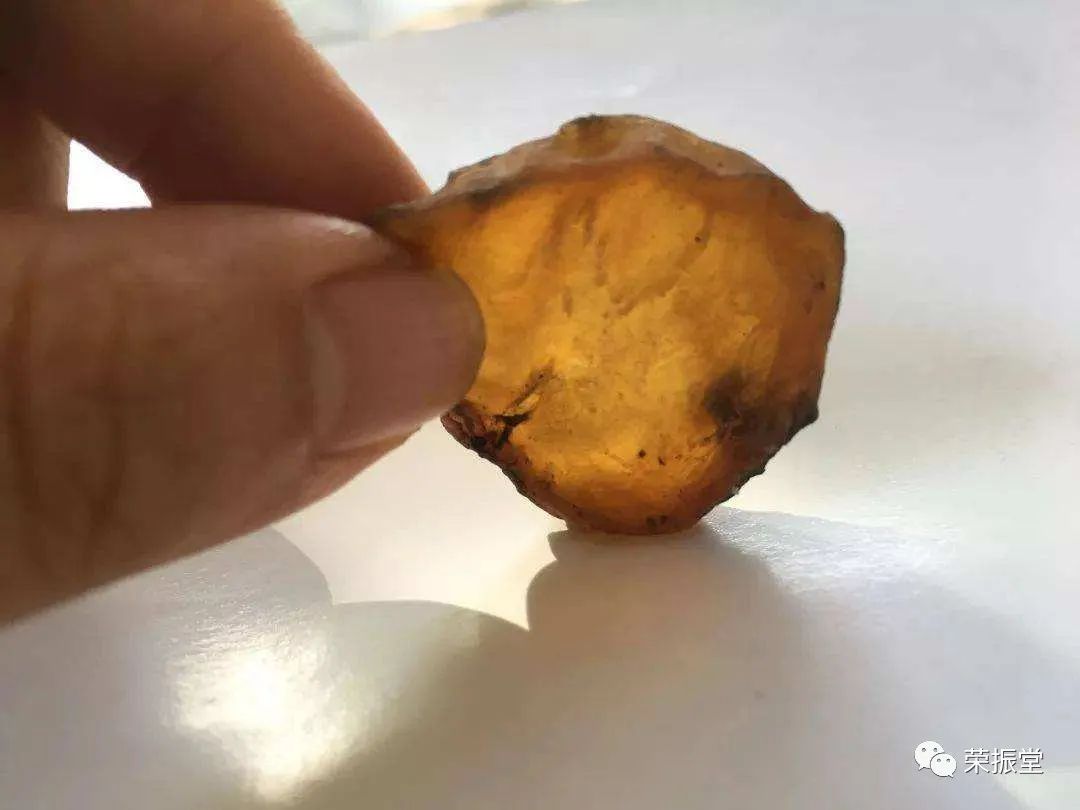
(Image from the internet, Fu Zi after peeling and processing)
Before discussing Fu Zi, it is essential to reiterate the contraindications for the use of Wu Tou and Fu Zi, and please use under the guidance of a physician: raw products should not be taken internally; pregnant women should use with caution; Wu Tou is contraindicated with Bei Mu (Chuan Bei Mu, Zhe Bei Mu), Gua Lou, Tian Hua Fen, Ban Xia, Bai Lian, Bai Ji in the eighteen antagonistic combinations, and any treatment involving these combinations must be confirmed by a TCM physician.
If you still do not understand how Xiao Xiong analyzes Chinese medicine, please refer to the previous articles:
Imagination One: Why can plants be used as medicine
Theory Two: Plant Adaptation to the Environment
Interesting Three: The Impact of Harvest Time and Parts on Medicinal Properties
Conclusion Four: The Processing of Chinese Medicine is like adding flowers to a brocade
Environmental Growth and Investigation
GROW
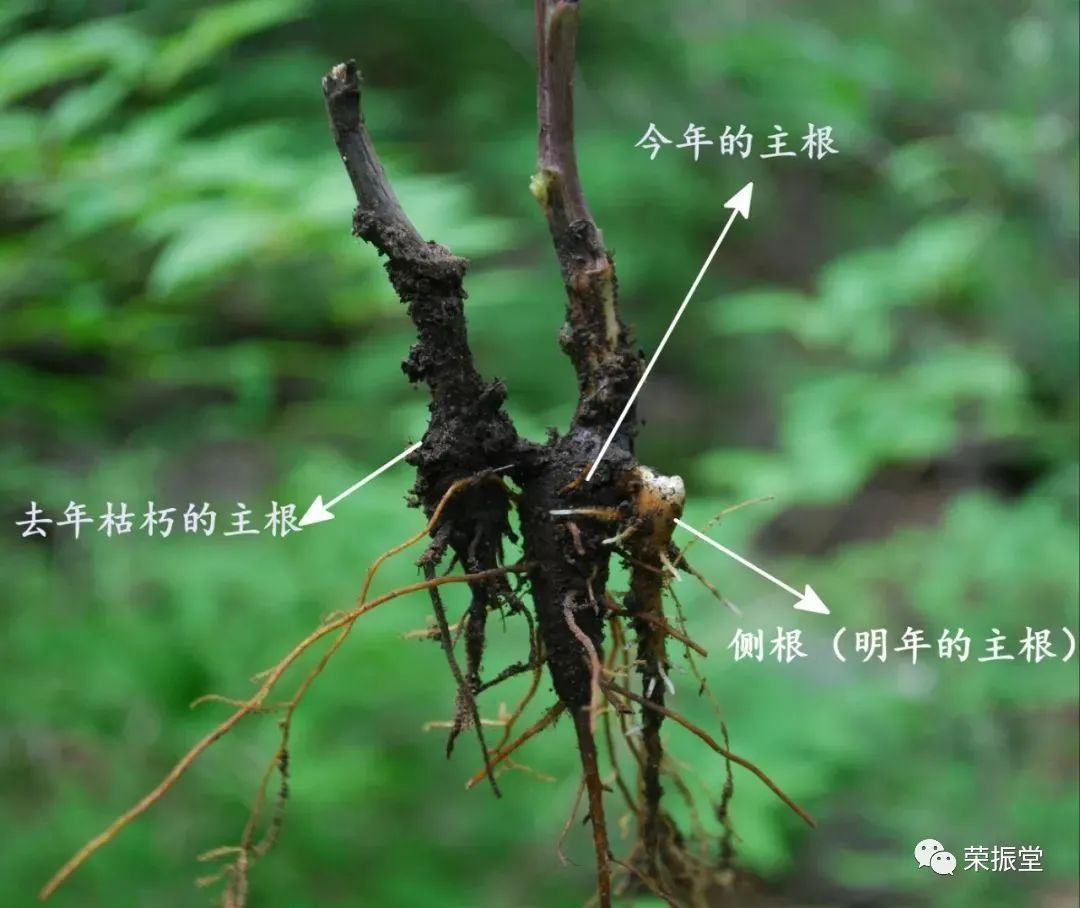
(Image from the internet, author Dong Ling Cao’s professional account)
Whether it is Fu Zi or Wu Tou, both are the roots of the Aconitum plant, and the difference lies in the growth patterns of these roots. The root of Cao Wu, as shown in the image below, gradually “relocates” through annual wilting and rebirth, resembling the migration of human populations across generations. Because the Cao Wu family has “family planning” and does not produce many lateral roots, most of them maintain the same size as the main root, resembling a carrot.
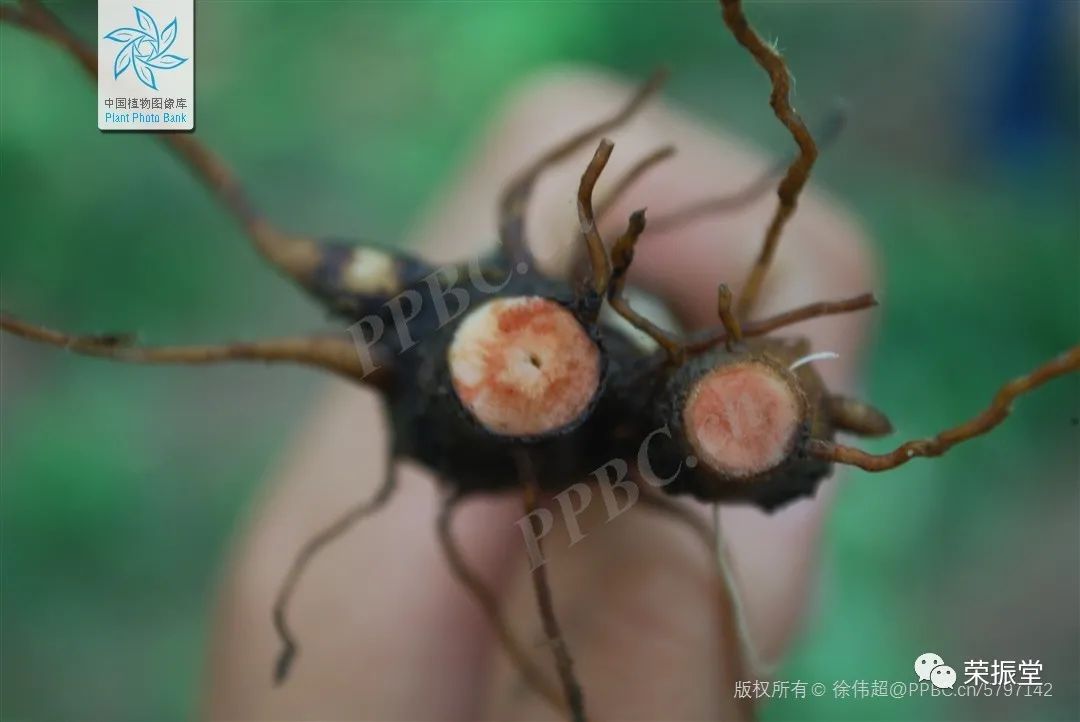
(Image from PPBC, Xu Weichao photographed Cao Wu)
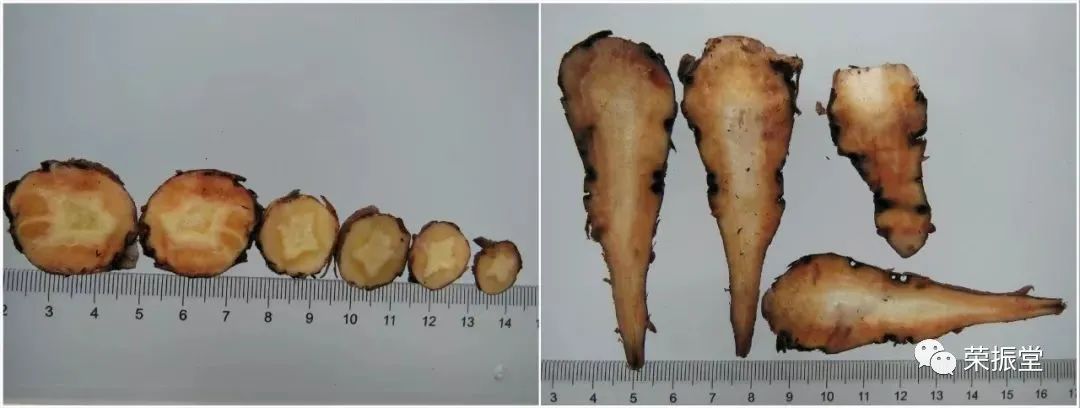
(Image from the internet, Cao Wu root, carrot-like shape)
In contrast, Chuan Wu “produces many offspring”, with numerous descendants (round and plump descendants)… Originally, the wild “descendants” are not that many, but through careful cultivation, branches are pruned, fertilization is timed, and small descendants are removed to retain the larger ones, resulting in a mother root surrounded by many child roots. Due to the price differences in medicinal use (especially in terms of authenticity), child roots (Fu Zi) are much more expensive than the mother root (Chuan Wu). However, in Jiangyou, if Fu Zi is not harvested shortly after the summer solstice, it will begin to rot in the soil within a few days; if harvested but not processed and preserved in time, it will also mold and decay.It is like charcoal that has been blown red; the heat quickly burns out and turns to ash.
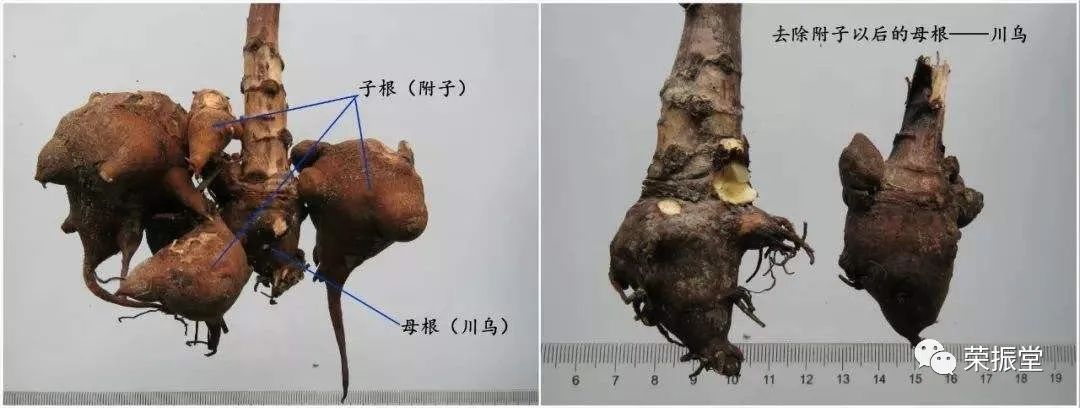
(Image from the internet, Chuan Wu)
Interestingly, the root of Aconitum can also be made into a soil pesticide. Its use as a pesticide is not because it kills pests, but because it can “rapidly induce maturity” in insects, allowing them to quickly undergo metamorphosis to a stage where they no longer rely on feeding on plants. This is a method of “non-lethal treatment”, which reflects that the root of Aconitum (including both Wu Tou and Fu Zi) has a role in promoting “growth and transformation” (note that it is not just “growth”, but also “transformation”).
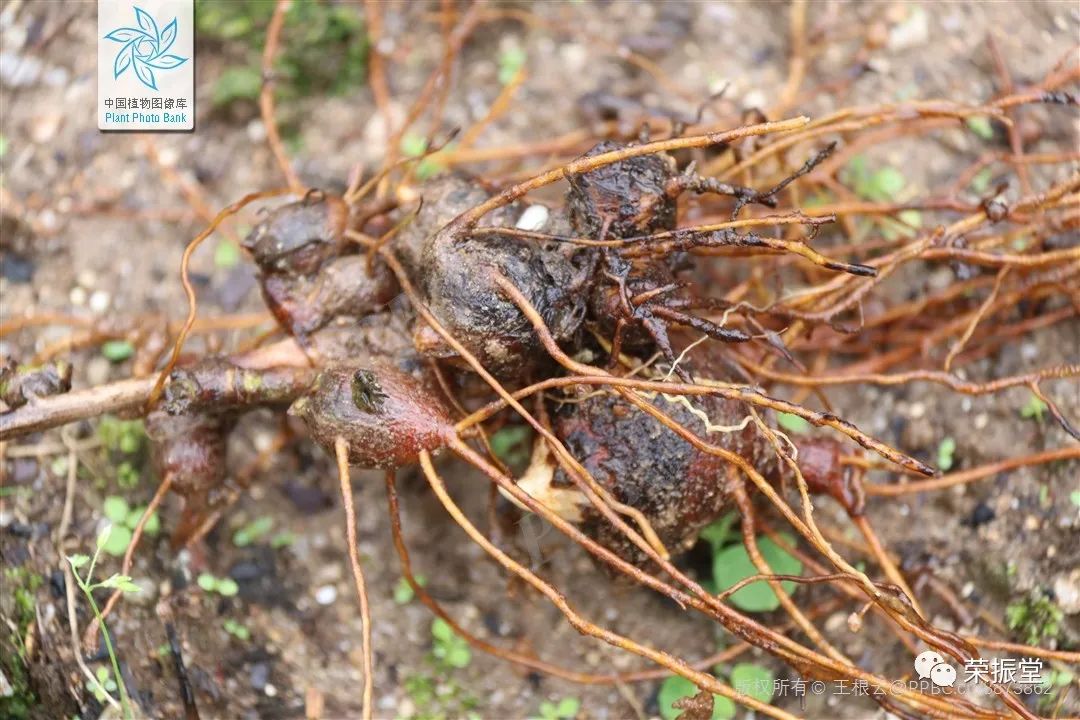
(Image from PPBC, Wang Genyun photographed Wu Tou and Fu Zi)
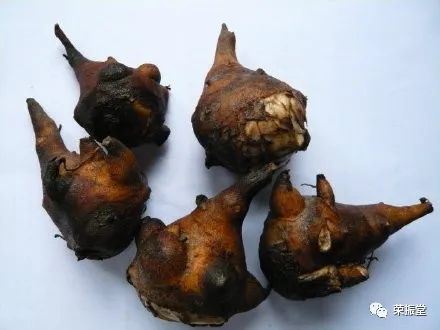
(Image from the internet, Fu Zi)
Fresh Fu Zi, when cleaned and cut at the root, looks like a “meteor hammer”, as seen in the image above. When split open, one can see the brown-black skin representing the Qian hexagram (Qian is the strong Yang metal), and the white filling the entire root interior representing the Dui hexagram (Dui is the Yin metal), as seen in the image below. If one did not know that Fu Zi is extremely spicy and hot, they might think it is a relative of water chestnuts; at this time, Fu Zi is at its most toxic (most hot).
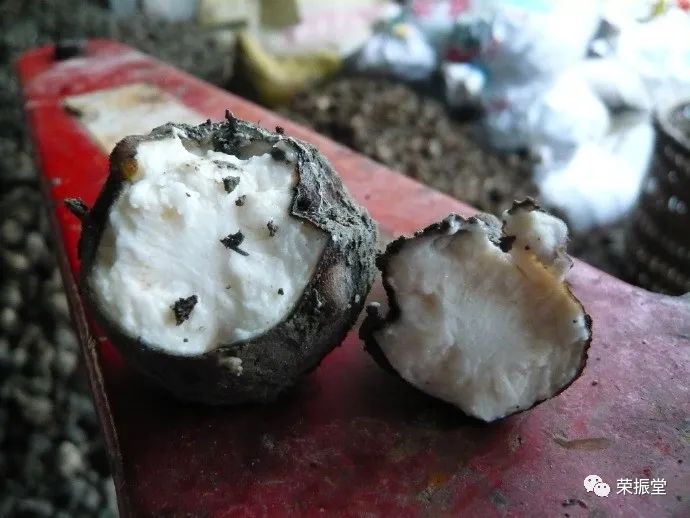
(Image from the internet, Sina Blog “Ancient Good Medicine”)
From the name Chuan Wu, we can infer that the plant producing Fu Zi grows in Sichuan, and the authentic Fu Zi comes from Jiangyou, Sichuan. In the years before the pandemic, many TCM practitioners traveled to Jiangyou, writing numerous articles that allowed us to connect with the hometown of Fu Zi while gaining a more detailed understanding of its processing (for details, you can search for the article: “Beware of Fu Zi Processing Traps, Discussing the Adverse Processing of Fu Zi”, authors Du Houyi and He Jiayu). Pure capital lacks benevolence, but those who use capital to practice benevolence are the rarest, just as mentioned in the text, the fault does not lie with Fu Zi. Initially, I thought the classification of heaven, earth, and humanity was based on their effects, but now I feel that human arrangements can dictate their good and evil uses; perhaps this is why Shennong classified Fu Zi as a lower-grade herb.
During the cultivation of Jiangyou Fu Zi, the seed roots (Wu Tou) are cultivated in higher altitude areas such as Beichuan and Qingchuan, hence the nickname “Jiangyou Fu Zi Qingchuan Seed”. We have previously discussed several plateau herbs, and cultivating in high altitudes allows the roots to “store energy”, enhancing their future growth potential.
To ensure the child roots (Fu Zi) grow robustly, each plant requires topping, axillary bud removal, and root pruning multiple times, which is labor-intensive. To improve efficiency and avoid continuous cropping diseases(where pathogenic bacteria accumulate severely, soil quality deteriorates, soil salinity and pH imbalance worsen with the years of cultivation, gradually accumulating at the surface, leading to soil compaction and deterioration of physical and chemical properties, increasing pH, affecting crop nutrient absorption.), Fu Zi is often intercropped with other plants such as rice, corn, and eggplant. The image below shows a photo of intercropped Jiangyou Fu Zi fields.
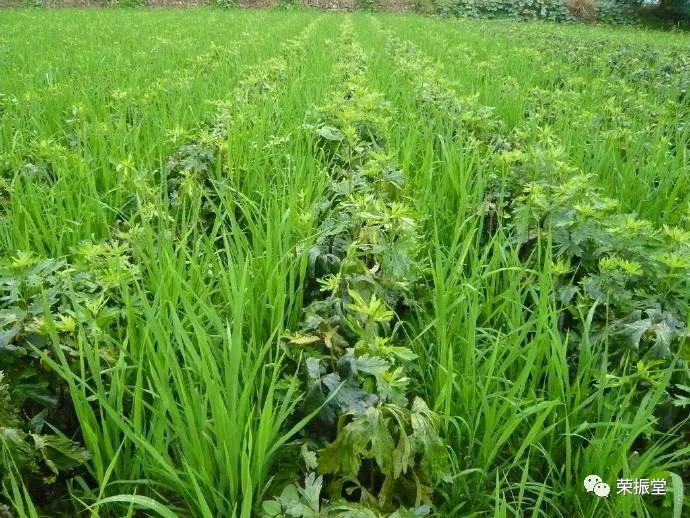
(Image from the internet, Sina Blog “Ancient Good Medicine”)
It is said that Jiangyou Fu Zi is planted during the winter solstice (the birth of Yang) and harvested during the summer solstice (the end of Yang, the birth of Yin), thus obtaining the full Yang of heaven and earth. Many Fu Zi slices used in medicine are not harvested according to this rhythm, but they do not exhibit the phenomenon of “rotting after the time has passed”, which indirectly suggests that Fu Zi harvested according to the rhythm in Jiangyou has the “most vitality”, with abundant Yang and no place for Yin to grow; while other Fu Zi may conceal vitality but have excess Yin.
In Jiangyou, the land is located in the southwest, belonging to the North Subtropical Humid Monsoon Climate, characterized by hot summers, warm winters, and distinct seasons, with long summers and simultaneous heat and rain. The fire is hidden within the Kun soil, and the great spiciness and heat are concealed within the starchy substance, which is precisely the essence of Zheng Qinan’s concept of “hidden fire”: heat rises and then disperses immediately, with a thin layer of soil covering it, allowing the fire to be concealed within. Although Zheng Qinan’s statement was made while discussing the effects of using sweet products (Zhi Gan Cao) with Fu Zi, Fu Zi itself grows in the Kun land, is it not also “hidden fire” that generates and conceals the Yang of heaven and earth?
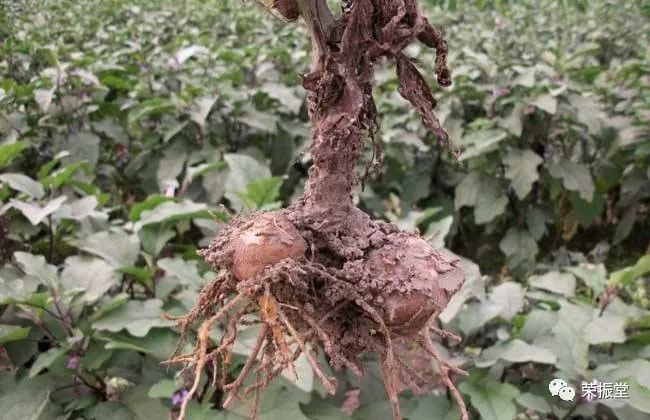
(Image from the internet, cover image of Fu Zi)
The child root of Cao Wu is similar in shape to the mother root, growing singularly and storing the Yang Qi to produce the stem in the following year; while the child root of Chuan Wu is more numerous and plump (Kun-shaped), resembling the feeling of concealing Yang Qi within the Kun soil, with the mother root tied up with a “money bag”. Interestingly, this “money bag” rots after a while, and is not meant to store energy for future upward growth of the stem. Therefore, speaking solely of Fu Zi, it is a storage of the true Yang of heaven and earth, great spiciness and heat, used in medicine to stimulate the true Yang of the human body, dynamic yet not confined to matter. This is why local farmers will soak freshly dug Fu Zi in gallbladder juice to preserve its pure Yang with bitterness as Yin.
As for Wu Tou, it is the place where the Yang Qi of heaven and earth transforms; it requires this Yang Qi and is also necessary for the growth of the plant. We can observe its effects and position through the morphology of its above-ground plant. First, let’s look at the appearance of the entire Wu Tou plant, without intentionally distinguishing between the varieties of Cao Wu and Chuan Wu (though the plant morphology may have slight differences, they are close relatives, with distinctions in leaf shape and whether the flowers have hair).
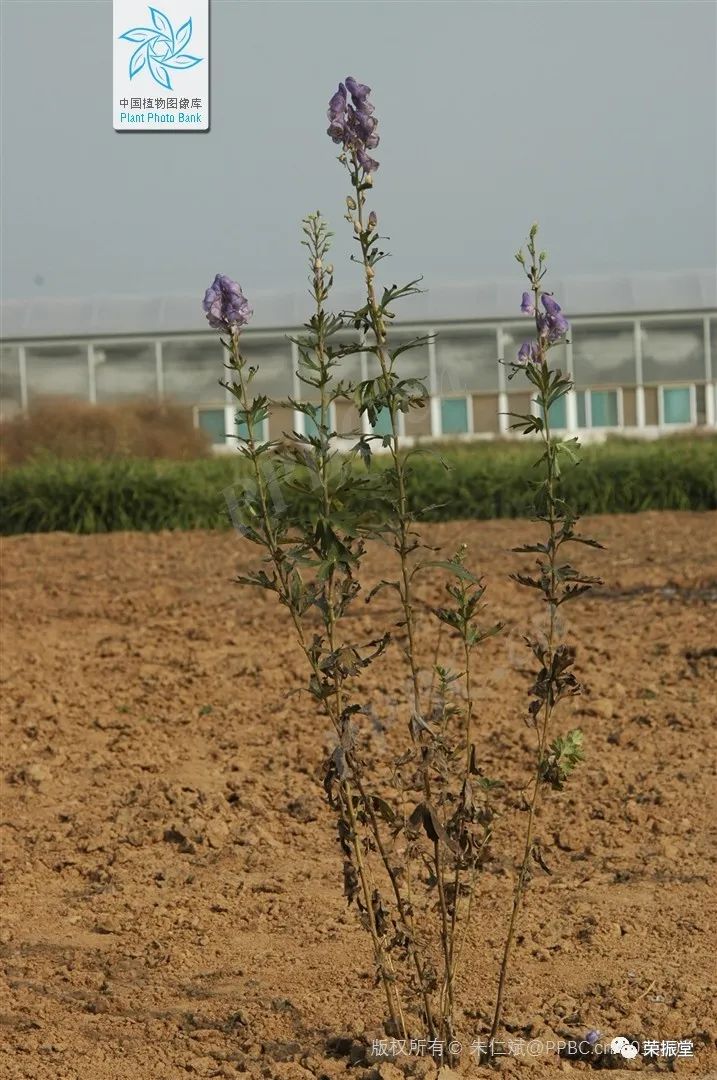
(Image from PPBC, Zhu Renbin photographed Wu Tou)
The Wu Tou plant prefers a cool and humid environment, is cold-resistant, and can withstand temperatures as low as -30°C in winter. According to previous knowledge, plants that can endure such severe cold should have roots that penetrate the soil more than 30 cm, but the roots of Wu Tou are not deep, yet they can withstand the cold, which shows the abundance of their Yang Qi. They require ample moisture but are also afraid of waterlogging (they need flowing water).
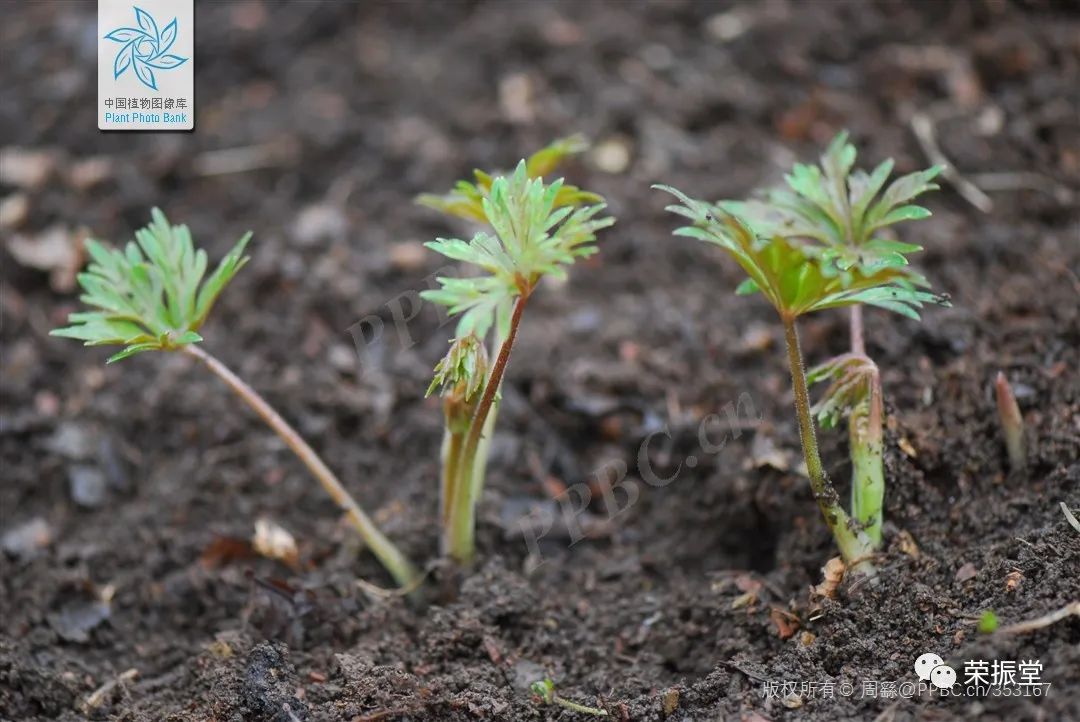
(Image from PPBC, Zhou Yao photographed Jilin Cao Wu seedlings)
The stem is slightly zigzag-shaped, thick and fleshy, generally growing straight up, reaching a height of up to 2 meters. The lower part is smooth and hairless, while the upper part has soft hairs (first Yang, then Yin). The lower leaves of the stem have long petioles and wither during flowering.
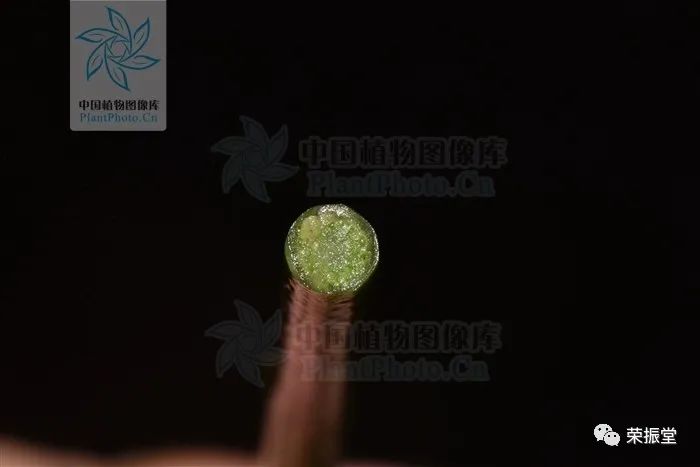
(Image from PPBC, Zhu Xinxin photographed the stem of Wu Tou)
When the seedlings grow, the stem appears first, followed by the leaves, and at the branching points, new stems and leaves can continue to grow, as seen in the image below.
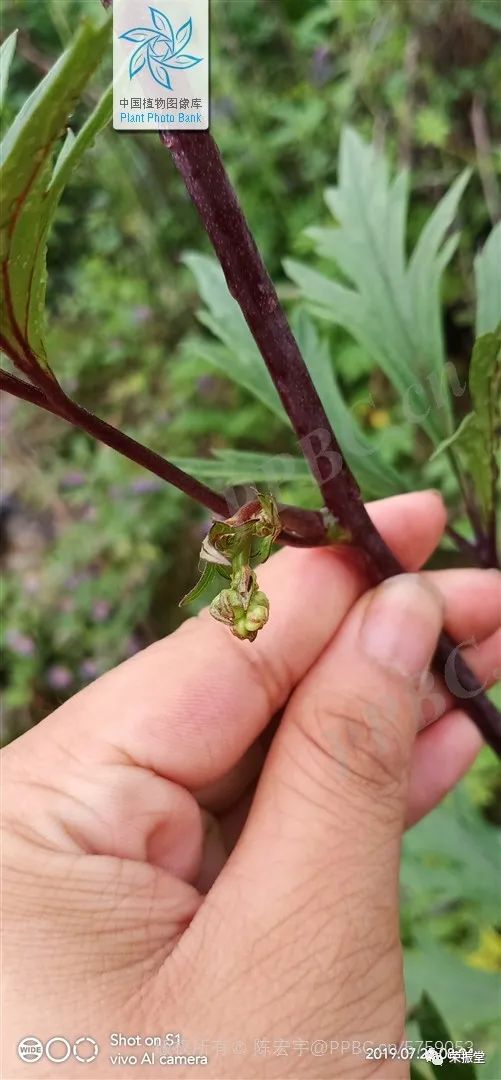
(Image from PPBC, Chen Hongyu photographed)
The base of the leaves is reddish, the leaves are alternate, and leathery (Xun has red veins, and leathery texture indicates thickening of the wood part, symbolizing: entering the blood and unblocking). The leaves (Cao Wu leaves) are spicy, astringent, neutral, slightly toxic, and have medicinal effects of clearing heat and relieving pain.
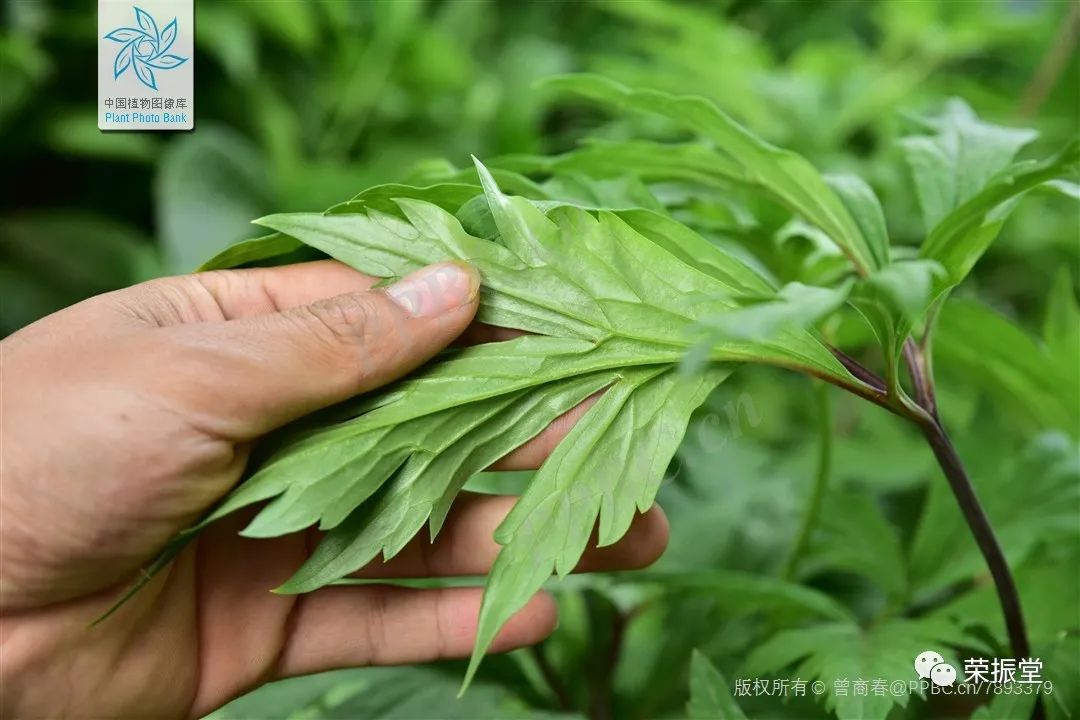
(Image from PPBC, Zeng Shangchun photographed)
The inflorescence is a raceme, with purple-blue sepals that are hairy, asymmetrical sepals, and fine purple veins resembling the fine capillaries of the human body. Chuan Wu plants bloom from June to July, and Fu Zi is harvested before the flowering period.
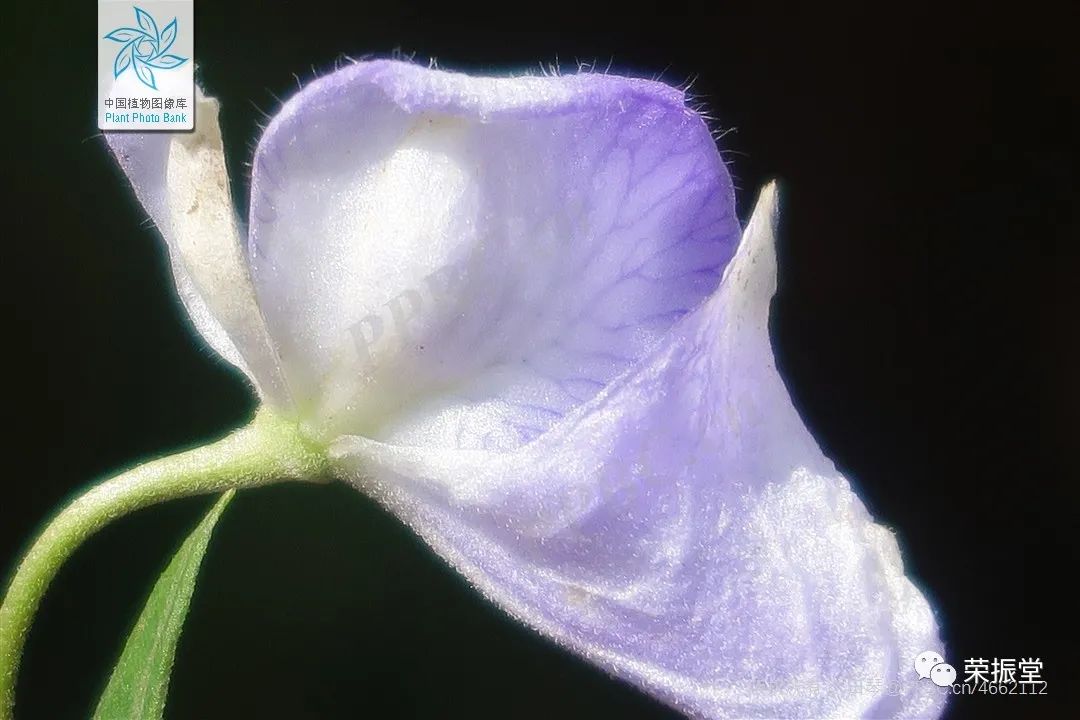
(Image from PPBC, Tian Qin photographed)
The fruiting period is from July to August, and the achenes also have veins, resembling little bugs hugging tightly (somehow adorable  ).
).
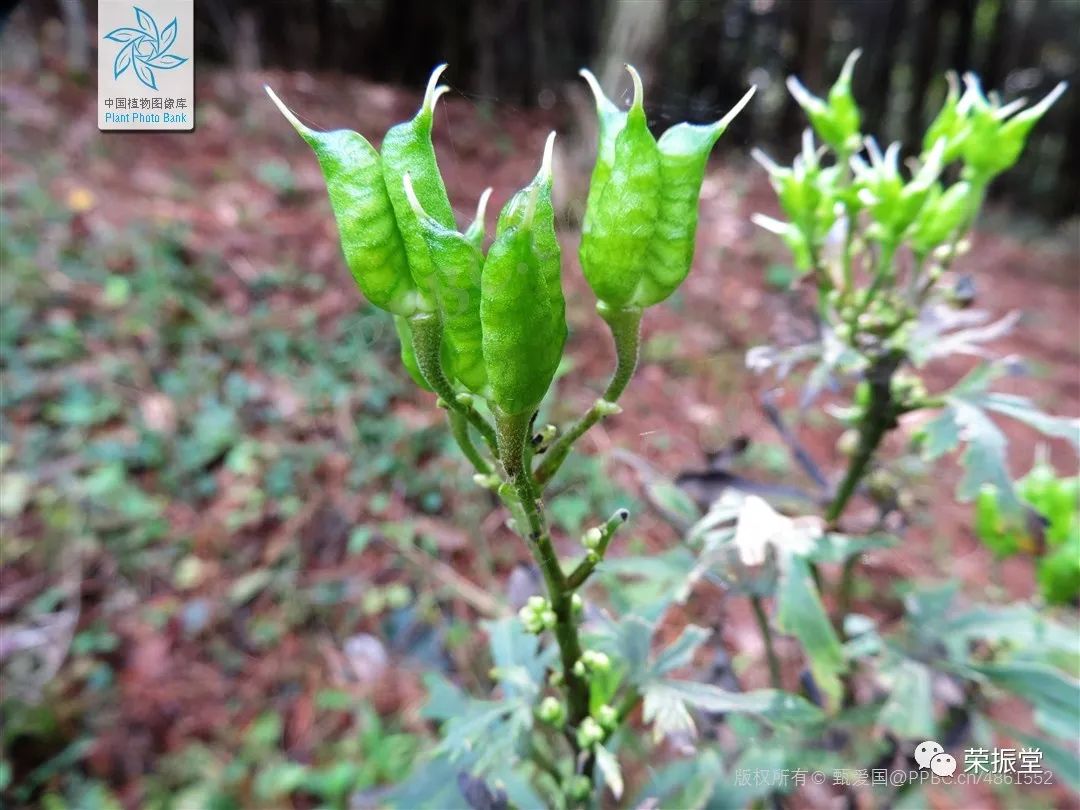
(Image from PPBC, Zhen Aiguo photographed)
When the achenes are split open, they reveal very unique seeds that look different from any seeds we have seen, almost as if they have animal life. The seeds are about 2.5 mm long, pale green, flattened oval-shaped, with narrow wings along the edges, and only one side has a transverse membrane wing. After harvesting the seeds, they must be sown in mid-November (before the beginning of winter) in high mountain soil, and the sowing must be completed before the soil freezes (breaking the seed’s dormancy requires temperatures below 15°C for more than 20 days). The tuber roots can be harvested in the second winter.
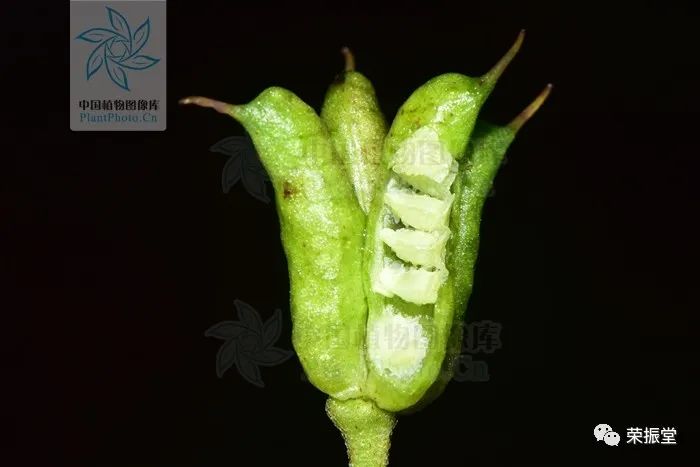
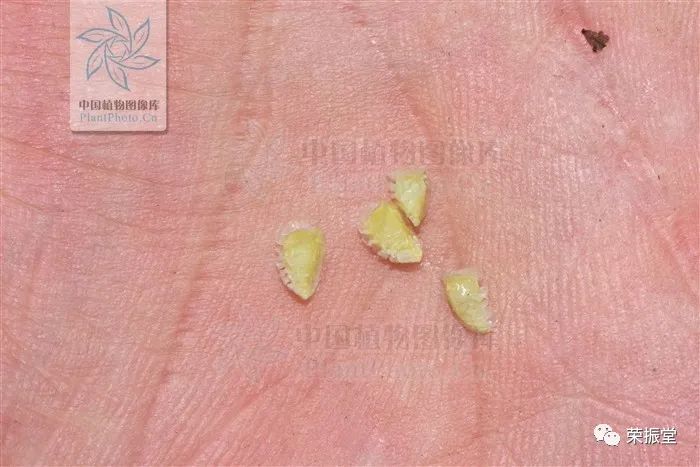
(Image from PPBC, Zhu Xinxin photographed)
In summary, Wu Tou, both Chuan Wu and Cao Wu, is harvested from the mother root in the same year, capable of withstanding temperatures as low as -30°C, and provides energy for the plant to grow up to 2 meters. Its Yang Qi can penetrate between the flesh, first warming the major arteries, caring for medium-sized arteries, unblocking the fascia, and warming the venous network, ultimately pushing the Yang Qi directly to the skin surface. The entire process covers the entire route from “Gen -> Zhen -> Xun -> Li ====> hidden in Kun” in the postnatal Bagua, starting from Gen and ending in Kun. Fu Zi, on the other hand, is the Qian hidden within Kun, concealed within Dui, like the sun at its zenith.
There are many plants with similar morphology, but why do they not possess such a strong ability to transform Yang Qi? This is determined by the inherent genes (spirit) of the plant species.
Comments from Historical Physicians
“Treatise on the Preparation of Medicinal Herbs”: If Fu Zi is flat at the bottom, has nine angles, and is iron-colored, each weighing one tael, it is full of Qi and can be used. Dig a pit in the afternoon, about one foot deep, place it in overnight, and take it out in the morning, then dry it for use. When preparing, do not use mixed wood fire, only willow wood is best. If using for Yin control, remove the sharp skin and bottom, thinly slice, soak in flowing water and black beans for five nights, then strain and dry in the sun. For every ten taels, use five taels of raw black beans and six liters of flowing water.
“Thousand Gold Winged Prescriptions”:Harvest in winter for Fu Zi, in spring for Wu Tou.
“Compendium of Materia Medica”: Fu Zi is harvested in early August,the eight angles are good. When using the three herbs(Fu Zi, Wu Tou, Tian Xiong), all should be prepared with hot ash to avoid over-roasting, only use with ginger and sweet products.
“Newly Revised Materia Medica”: Common prescriptions using Fu Zi must include licorice, or ginseng, or dried ginger to counteract its toxicity.
“Materia Medica of the Classics”:If you want to store it for a long time, it must be placed in a jar with stove ash and kept near the fire to last longer.
“Essentials of Materia Medica”:Greatly drying, reviving Yang, supplementing Kidney Ming fire, expelling wind, cold, and dampness. Spicy and sweet with toxicity, great heat and pure Yang. Its nature is floating and not sinking, its use is swift and not restrained, it circulates through the twelve meridians, reaching everywhere.It can draw Qi-replenishing herbs to restore scattered original Yang, draw blood-replenishing herbs to nourish insufficient true Yin, and induce dispersing herbs to open the pores to expel wind and cold from the surface(like dried ginger and cinnamon twigs, warming the meridians and dispersing cold to induce sweating),and draw warming herbs to reach the lower burner to expel internal cold and dampness(it can draw fire downwards, and also has the effect of adjusting fluids to apply to the soles). It is also included in the Eight Flavor Pill, along with Di Huang and others to replenish Yin).Treats three Yin cold damage(Wu Shou said: Fu Zi is the essential medicine for Yin syndromes…If waiting until Yin is extreme and Yang is exhausted to use it, it will be too late.)……Treats wind-cold-damp obstruction, being the main medicine for wind families, inducing sweating while also stopping Yin sweating. The side roots grow beside the main root,and are suitable for dispersing the four limbs, reaching the skin and hair, treating wind-damp obstruction in hands and feet.
“Materia Medica of the Classics”:Also causes miscarriage, and reduces swelling and abscesses…Specially supplements Yang deficiency in the upper burner, good for treating all wind Qi.
“Feng’s Secret Record”:Fully embodies the dry and fierce energy of the earth, while also obtaining the heat of heaven, hence its flavor is greatly spicy and hot, slightly sweet and bitter, yet highly toxic.Its Qi is dense and flavor is thin, Yin within Yang, descending more and ascending less, floating within sinking, reaching everywhere, enteringthe hand Jueyinmingmen,hand ShaoyangSan Jiao, also enteringthe foot Shaoyin Taiyinmeridians, its nature is swift and not restrained, being a crucial medicine for strongly replenishing original Yangand expelling the three evils of wind, cold, and dampness.
“Gu Songyuan’s Medical Mirror”: Enters the Spleen and Kidney meridians… Replenishes the Yang deficiency of the lower burner, expels the cold and dampness from the organs…Eliminates Yin cold, enhances Yang fire, and is a holy product for expelling cold dampness. If combined with cinnamon, it enters the Mingmen, enhances fire, and if combined with ginseng, it can recover lost original Yang, while using ginger to disperse wind and cold on the surface, and with Bai Zhu to effectively eliminate cold dampness, and with Gan Cao to moderate its heat nature.
“Seeking Truth in Materia Medica”:Replenishes Ming fire to expel cold and numbness…Flavor is spicy and hot. Pure Yang is toxic. Its nature is swift and not restrained, circulating through the twelve meridians, reaching everywhere.It is the first essential agent for replenishing the true fire of the Mingmen.For all symptoms of cold and chronic cold, using this will yield results.
“Newly Compiled Materia Medica”:Fu Zi reaches all meridians, obtaining its Qi without needing its flavor,entering the meridians without needing to remain in the organs,able to replenish Qi to generate Qi, assist in replenishing blood to generate blood, without the risk of increasing fire and heat, instead achieving the effect of strengthening the stomach and regulating the appetite…When ginseng is combined with Fu Zi, it can directly advance, breaking through all barriers; when Fu Zi is combined with ginseng, the effects are achieved without harming the blood vessels.
“Matching Materia Medica”:Its strong and fierce nature can break through barriers and doors, not suitable for use in cases of extreme cold directly affecting the Yin meridians, and true Yang being scattered and nearly lost, should not be used lightly. It draws Qi-replenishing herbs to restore lost original Yang. It draws blood-replenishing herbs to nourish insufficient true Yin. It draws dispersing herbs to drive away wind and cold on the surface. It draws warming herbs to expel internal cold and dampness.
“Changsha Medicine Explanation”:Enters the foot Taiyin Spleen and foot Shaoyin Kidney meridians. Warms water and dries soil, expelling dampness and cold, moving through the middle palace to warm the spleen, entering the lower burner to warm the kidneys,replenishing the fire seed of the lower burner, continuing the broken Yang root. Treats coldness in hands and feet, opens the stagnation of the organs, alleviates pain in the waist and abdomen, relaxes the stiffness of the ankles and knees, unblocks the cold and stasis in the meridians, and eliminates cold masses in the abdomen. It can also descend turbid Yin, recover from nausea, and lift the clear Yang that has sunk, effectively stopping bloating.
“Compendium of Materia Medica”:Earth gall (like an ant bug, also known as Yuan Qing) is used with it, while it is incompatible with centipedes, and should be avoided with wind, black beans, licorice, Huang Qi, Ren Shen, and Wu Jiu.
“Essentials of Materia Medica”:For those poisoned, Huang Lian, Xi Jiao, and Gan Cao decoction can detoxify, and yellow earth water can also detoxify.
“Materia Medica of the Classics”:Should avoid soy sauce, and is incompatible with Li Lu. It is antagonistic to Ban Xia, Gua Lou, and Bei Mu, and should be used with caution with various meridians.
“Newly Compiled Materia Medica”:When used properly, it can lead to immediate rebirth; when used improperly, it can lead to death in an instant.
“Materia Medica of the Classics”:For those poisoned, fresh radish juice and Huang Lian can detoxify.
Note:
Fu Zi should be of good quality, with eight angles and large heads, prepared with ash and kept near fire. “Essentials of Materia Medica” has already described its nature as “greatly drying, reviving Yang, supplementing Kidney Ming fire, expelling wind and cold dampness”; “Seeking Truth in Materia Medica” has already expressed its use as “its nature is swift and not restrained, circulating through the twelve meridians, reaching everywhere, being the first essential agent for replenishing the true fire of the Mingmen”. If not paired with other herbs and methods, using Fu Zi alone is like “lighting a lamp and fanning the fire”, hastily treating Yin syndromes; only when combined with sweet agents can it have the subtle effect of slowly supplementing Yin and Yang.
Ancient people also feared Fu Zi, warning us that “not knowing how to use it is equivalent to killing someone”. In addition to the ancient texts mentioned above, we can also draw more experiences on using Fu Zi from the works of Zheng Qinan and the writings of TCM practitioner Li Ke.
Remember the contraindications, especially that pregnant women should avoid it; remember the detoxification methods, and use caution with sharp tools. Of course, due to the urgent profit-seeking nature of Chinese medicine processing and capital, Fu Zi may temporarily lack the powerful effects of ancient times, and its toxicity may even increase. However, more and more people are beginning to use Fu Zi and are starting to pay attention to how to identify good Fu Zi, hoping to gradually “illuminate” the darkness that exists in processing methods.

For previous summary articles, please click the links below:
A Detailed Discussion on Chinese Herbal Medicine | Summary of Heat-Clearing and Detoxifying Herbs (Hexagram Position)
A Detailed Discussion on Chinese Herbal Medicine | Summary of Heat-Clearing and Drying Dampness Herbs
A Detailed Discussion on Chinese Herbal Medicine | Summary of Heat-Clearing and Fire-Draining Herbs (Hexagram Position)
A Detailed Discussion on Chinese Herbal Medicine | Summary of Herbs for Releasing the Exterior and Dispelling Cold
A Detailed Discussion on Chinese Herbal Medicine | Summary of Herbs for Dispelling Wind Heat (Bagua)
A Detailed Discussion on Chinese Herbal Medicine | Summary of Herbs for Clearing Heat and Cooling Blood (Bagua)
A Detailed Discussion on Chinese Herbal Medicine | Summary of Herbs for Clearing Empty Heat (Bagua)
A Detailed Discussion on Chinese Herbal Medicine | Summary of Laxative Herbs (Bagua)
Herbs for Dispelling Wind and Dampness (currently being updated):
Herbs for Dispelling Wind and Cold Dampness:
-
A Detailed Discussion on Chinese Herbal Medicine | Du Huo——Opening and Closing to Supplement Blood, Gently Shaking to Search for Wind in Subtle Places
-
A Detailed Discussion on Chinese Herbal Medicine | Wei Ling Xian——Drawing from the Pit to Warm and Unblock Chronic Ailments, Quickly Unblocking the Water Qi of the Five Organs

